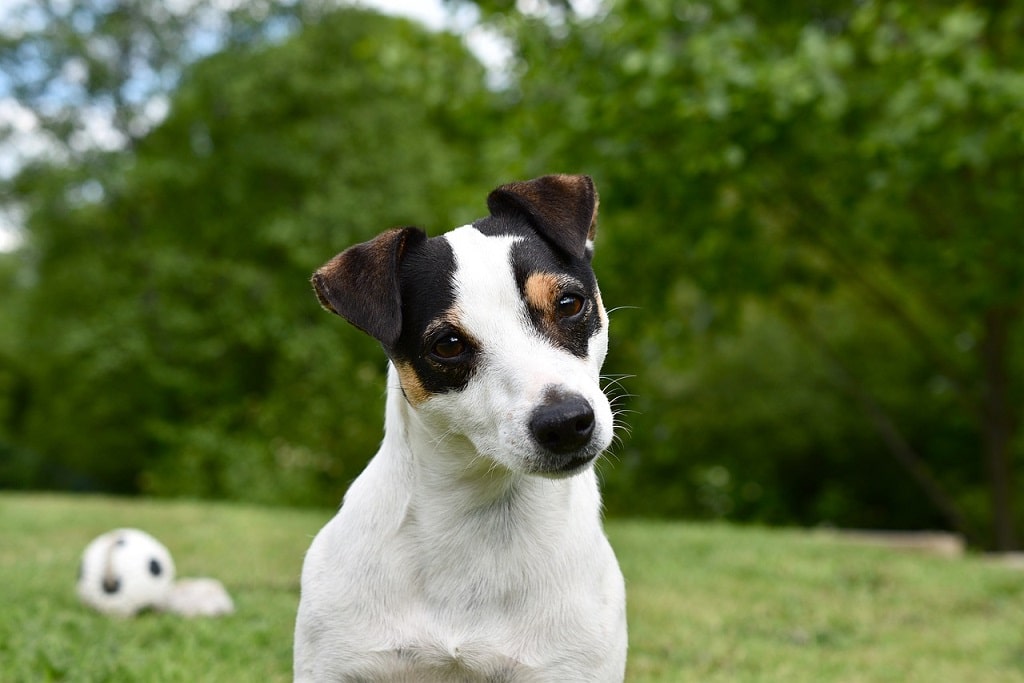If you ask any dog trainer which the least well-behaved breeds are, expect them to mention several small dogs. Chihuahuas, Dachshunds, Jack Russel Terriers, and Yorkies are notorious for having pulling onning issues, pulling-on leash, barking incessantly, and exhibiting rather pronounced reactivity. They can be nippy with visitors, snarly with other dogs, and grumpy with kids … for being so small, little dogs sure can come with a lot of issues!
This post covers the question of where small dog syndrome comes from and how you can avoid it in your own little pup.
Table of Contents
Signs of small dog syndrome
Small dog syndrome usually develops between the ages of 8 and 18 months in small-sized dogs. Nearly all dogs are friendly and outgoing as puppies. If owners do not take care to provide them with ample opportunity for socialization, exposure, and training, however, once they get closer to their first birthday, they can exhibit several troubling traits.
Dogs with Small Dog Syndrome show:
- Marking inside the house
- Incessant barking
- Reactivity, especially around boundaries such as behind fences or on a leash
- Nipping and growling at people and other dogs
- Restlessness – pacing around the home without pause (often combined with barking loudly at any noise such as the doorbell ringing or even footsteps)
- Inability to focus on the owner and listen to cues
If your small breed dog exhibits 2 or more of those signs for more than a month, it likely has small dog syndrome.
Related: Tips to Stop Your Dogs from Destructive Chewing
Origin of small dog syndrome
While small dog syndrome occurs – of course – in small breeds, it is not caused by the dog’s size, but rather by the way that owners tend to treat lap dogs. Generally, the larger and more powerful a dog is, the more proactive owners are in making sure their dog is well-trained and well-behaved.
If someone acquires a Belgian Malinois puppy, they are very likely to take great care to take their dog to training classes, socialize it and provide adequate exercise. With smaller dogs, however, many owners think that they are not only low-weight but also low-maintenance which is usually wrong.
They neglect to take their dog to puppy and obedience classes, skip out on walks, and don’t socialize their pup. As the dog enters adolescence, the lack of these crucial elements of puppy raising becomes evident in difficult and frustrating behaviors.
A small dog that is not trained and a big dog that is not trained will both be poorly mannered.
Bad genes – or bad training?
Many small breeds such as Chihuahuas are known to be poorly behaved dogs. This is not fair to the breed itself – it is, once more, a consequence of the reduced attention Chihuahua owners often pay to train their dogs. They think that such a small dog does not need to be taken to classes or see a professional trainer to address problem behaviors.
A small dog that is trained and a big dog that is trained will become equally well-behaved dogs. A small dog that is not trained and a big dog that is not trained will both be poorly mannered. It is not the size that determines how a dog acts.
Read: Does Coconut Oil Kill Fleas in Dogs?
Preventing small dog syndrome
It is easier to avoid small dog syndrome altogether by treating your little dog just like you would treat a big dog. Take it to training classes and puppy playgroups. Provide adequate socialization and exposure. Practice leash walking (this is a big one!).
If your dog shows any beginning behavioral problems (such as resource guarding), address them right away. The longer you wait, the worse they will get. It is usually not too difficult to solve an issue that is just arising. Dealing with already ingrained problem behavior is going to be much more challenging.
Walking issues
The vast majority of all small dogs have issues with going for walks. They might be highly reactive or pull incessantly on a leash. Owners often ignore this and simply pick up their dogs if they become too wound up.
Little dogs should go through the same leash walking process as large breeds. This means teaching them to stay by your side, ignore distractions and not react to other dogs or people. In most leash walking classes, we rarely see owners of small dogs. This is a shame – they need to learn good leash manners just as much as their larger cousins!
Another common walking problem is that small dogs simply do not get walked often enough. Their owners think that because they are little, they can “self-exercise” in the yard. Again – this is not true! Any dog will be much more restless and reactive inside the home if he is not taken on regular outings. He needs both the mental and physical stimulation of walks.
The more daily exercise is neglected, the worse small dog syndrome will become.
Potty troubles
Many small dogs have house training issues. They may have frequent accidents even after puppyhood and mark on furniture and carpets. Again, the problem is that owners do not address this as quickly and extensively as they would if it was a large dog. Potty pads do not help in the long run. Instead, invest time and energy to potty-train your little dog well. Taking him on regular walks (as mentioned above) will help with marking as well – if your dog can get his marking desire out on walks, he is much less likely to mark inside.
Related: Why Do Dogs Eat Poop and How to Deal With it?
Small but mighty
With the right training and routine, small dogs will become amazing companions. They are highly intelligent and often surprisingly athletic. Little dogs can excel in dog agility, learn a large number of tricks, accompany their owners on long hikes and be all-around great pets.
When it comes to training and working with your small dog, simply imagine that it is actually a big dog. Never neglect to address an issue or work on a specific skill simply because your dog is little. Instead, strive to give him the best possible foundation to become a great family dog.
The Bottom Line
Small dog syndrome is a collection of unwanted behaviors such as marking problems, reactivity, barking, leash walking troubles, and restlessness that occurs in small breeds. It is not directly related to the size of the dog but rather to the way that owners treat small dogs. While large dogs are taken to training classes and experience extensive socialization, the same does not happen for many small breeds.
By treating your small dog just like a big dog when it comes to training and exercise, you can prevent small dog syndrome and turn him into an amazing companion!
Recommended read – Groodle Temperament and Behavior










